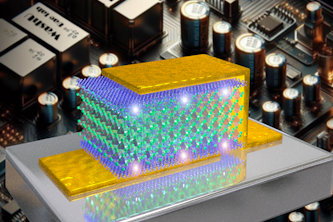Carotenoids play role in regulating light harvesting
New research sheds light on a unique aspect of the role of carotenoids in regulating light-harvesting efficiency in photosynthetic organisms

Research from the Department of Energy, Environmental & Chemical Engineering has shed light on a unique aspect of the role and limitations of carotenoids — a molecule class of which b-carotene is a part — in regulating light-harvesting efficiency in photosynthetic organisms.
The study, led by Dariusz Niedzwiedzki, a researcher at the McKelvey School of Engineering, and Andrew Hitchcock, a researcher from University of Sheffield, looked at the relationship between structural motifs of carotenoids, like their number of conjugated carbon-carbon double bonds (N), and their roles in light-harvesting complexes (LHCs), protein-pigment complexes which absorb light energy as the first step in the photosynthesis process.It was published March 5, 2020, in the Proceedings of the National Academy of Sciences.
Carotenoids help regulate the efficiency of LHCs and photoprotect the primary photosynthetic pigments, chlorophylls and bacteriochlorophylls, embedded in those complexes. Carotenoids with fewer N allow LHCs to be more efficient however, in nature there are no examples of LHCs preferring carotenoids with N < 9.
Using advanced spectroscopic methods like femtosecond time-resolved transient absorption and an engineered bacterial LHC that contained carotenoid that had just N = 7, Niedzwiedzki and team found that, although decreasing the length of carotenoid conjugation N would give the photosynthetic organism advantage of having LHCs with improved efficiency of light harvesting, it came at a price.
Notably this research demonstrated that carotenoids with such short N essentially do not provide photoprotection in LHCs, which is essential for survival of all photosynthetic organisms exposed to stressful conditions such as full sunlight. It is also valuable information for researchers who work on mimicking photosynthesis using bioinspired, artificially made light-harvesting complexes.



